

William Thomas Partleton (1911-1975)

Part II
This page is a continuation of the story of William Thomas Partleton. To see Part I, click here.
To summarise, Bill Partleton had been born in Canning Town in West Ham in the East End of London. While Bill was quite young, his family had relocated to another East End district, Poplar. The new premises were a hair salon on Upper North Street. Prior to this, Bill's dad had had a variety of jobs, but the hair salon was a signal success. All of the boys trained as barbers; Bill was certainly talented, winning a gold medal for his skills.
Consequently the family were all opposed when Bill announced that he had received an offer to train in the movie business... click on the short clip below:
This step into the unknown would result in a substantial drop in income, but the offer was to train at Gainsborough Pictures under the top film make-up artist of the time, Hermann Rosenthal. Who could refuse that?
Bill wrote down a record of his experiences in the movie business in a notebook, which has been kindly transcribed for The Partleton Tree by his daughter Lynne. These notes are very brief, and are clearly intended as just memory-joggers for a biography which was never written, but they do give us some fascinating insight.
His earliest notes are for two films made in 1933; Friday the Thirteenth and Soldiers of the King. Friday the Thirteenth was a comedy/drama about a bus struck by lightning and tells the tales of its passengers lives, before and after the event; click below for a short clip:
One of the passengers dies, but only at the end of the film - after we've seen their back-stories - do we find out which one. This film featured a young Sir Ralph Richardson, legendary cockney music-hall comedian Max Miller [in later life banned from the BBC due to his blue jokes] and Jessie Matthews:
 Ralph Richardson------
Ralph Richardson------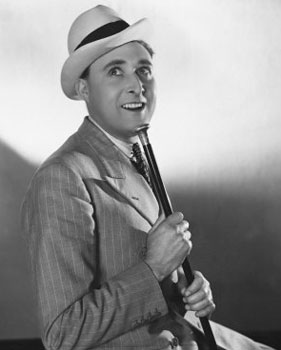 Max Miller ----
Max Miller ----  Jessie Matthews
Jessie Matthews
Jessie Matthews is almost completely forgotten today; I'd never heard of her before I wrote this page.
But, it turns out, that before WW2, she was Britain’s biggest film star by far. Really.
She was on the covers of magazines for years and years. Below we see her in 1928 and 1935:
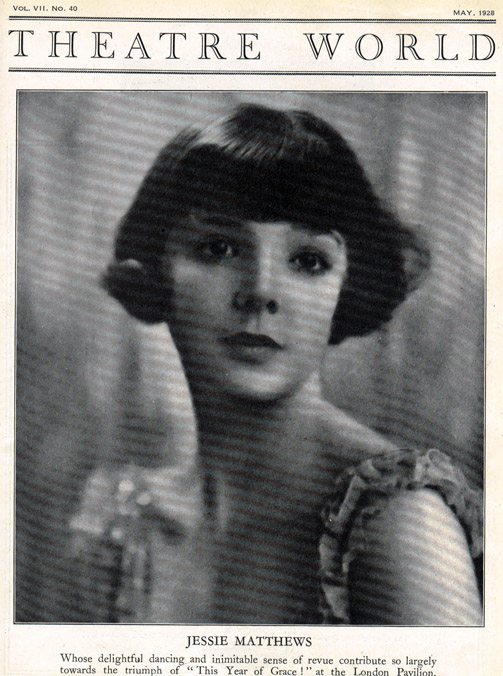 xxx
xxx
Soldiers of the King was a musical comedy starring Cicely Courtneidge:
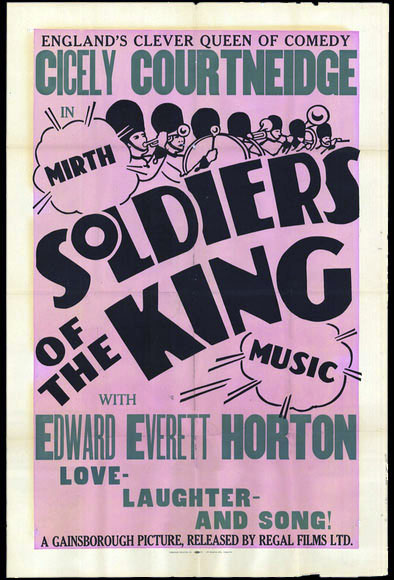 ---------------------------------
---------------------------------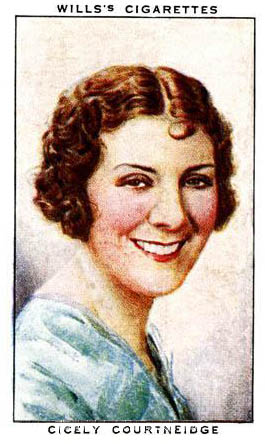
A ploy occasionally used by Gainsborough, as was the case this time with Edward Everett Horton, was to bring over American actors to give their films more appeal for sales to the United States.

At the end of filming this created a problem for young Bill Partleton to whom was delegated the task of getting the American home after shooting finished, as we read in his notes; "Worked forty eight hours continuously to help get Horton back to States."
Bill's entry for the 1934 Gainsborough film The Claivoyant is interesting because this film featured two actors who were notably big Hollywood stars; Claude Rains and Fay Wray. If you need to have your memory jogged about these two artistes, check out the pictures below:
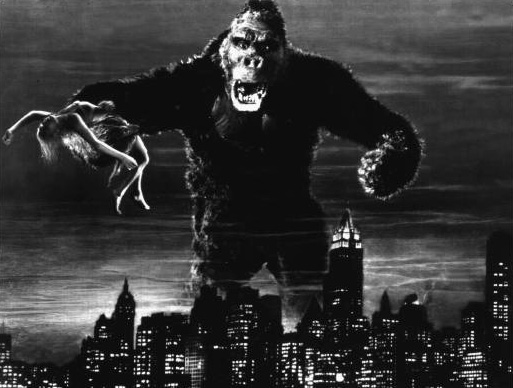 ----------
----------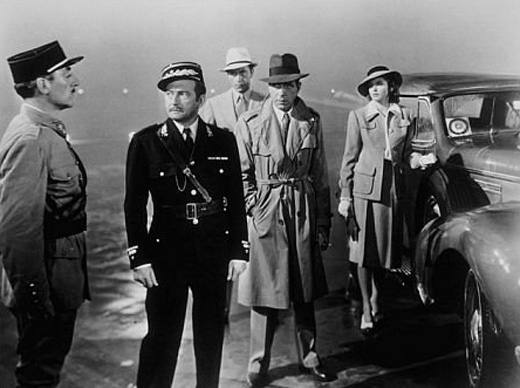
Both actors had shot to fame the previous year, 1933. That's Fay Wray, of course, in King Kong's hand. In 2004, Fay was approached by director Peter Jackson for a small cameo in the 2005 remake of King Kong, but sadly she passed away on 08 August 2004, a month short of her 97th birthday.
Also in the year 1933, Claude Rains had starred in Universal's highly successful The Invisible Man, for which he was chosen more for his striking voice than anything else. Our picture, above, shows him in his most famous role, French policeman Captain Renault in Casablanca.
Below we see him in a poster for Gainsborough's The Clairyoyant:

Claude Rains shared his humble beginnings in conversation with our Bill during make-up sessions for the film, as recorded in Bill's notes: "Told me he started life in the theatre as a call boy. Then developed acting ability and eventually became a top star before going to Hollywood."
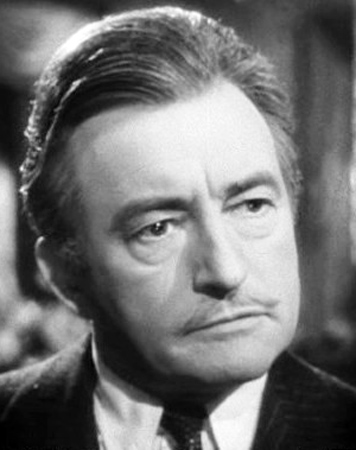 Claude Rains--------------
Claude Rains--------------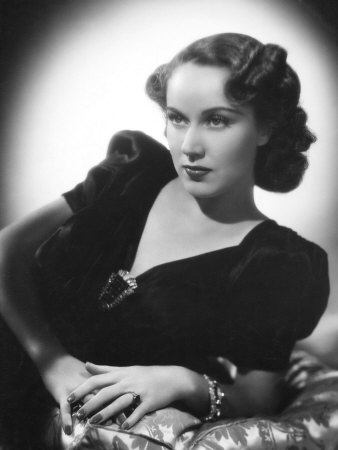 Fay Wray
Fay Wray
Also in 1934, Gainsborough Pictures produced Princess Charming starring Evelyn Laye as the princess, and Yvonne Arnaud as the king's mistress. Bill's notes on this film say:
"In trouble with boss over repaired MM (?). Received gold watch from Yvonne Arnaud"
If anyone knows what an "MM" is, then please let us know! A gold watch was a generous gift, especially when one considers this is the period of the Great Depression... here's Ms Arnaud, a French actress who moved to England, and the star of the film, Evelyn Laye:
 Yvonne Arnaud-----------
Yvonne Arnaud-----------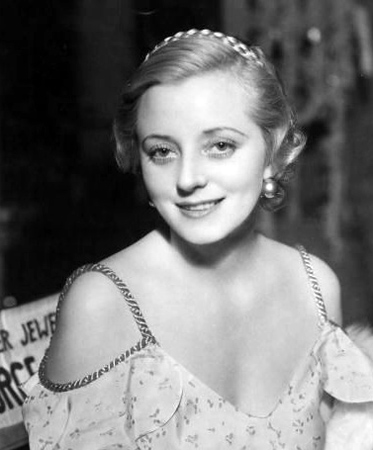 Evelyn Laye
Evelyn Laye
I looked for a poster of this movie but unfortunately, this is the best I could find:
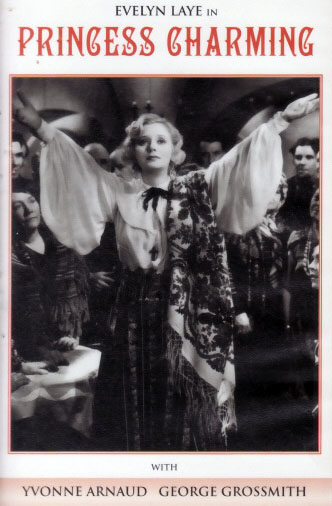
But here's Evelyn Laye selling fags in an absurd 1956 cigarette advert. Oh, those tobacco companies:

Though Bill Partleton knew them both, Evelyn Laye never appeared in any movie with contemporary female film star Jessie Matthews, to whom we were introduced earlier. The reason? Well, in real life, in 1930, Jessie Matthews had had an affair with Mrs Laye's husband, and had eventually stolen him away. Who was he? Well, his name was Sonnie Hale, and he was the bus conductor in that clip we saw earlier!
Sonnie Hale's divorce from Evelyn Laye was, as you can imagine, a big story in the newspapers, and much salacious reporting had ensued when, during the divorce proceedings, Jessie Matthews' love letters to Mr Hale, written during their affair, were read out loud in court. They were scandalously graphic, and the newpapers loved it. The judge couldn't cope with Jessie's explicit written declarations and denounced her as... "of odious mind".
 Left: Gloucester Citizen, Friday 11 July 1930
Left: Gloucester Citizen, Friday 11 July 1930
Let's have another look at the doe-eyed hussey Jessie Matthews, perhaps after we've helped Bill to apply her makeup;
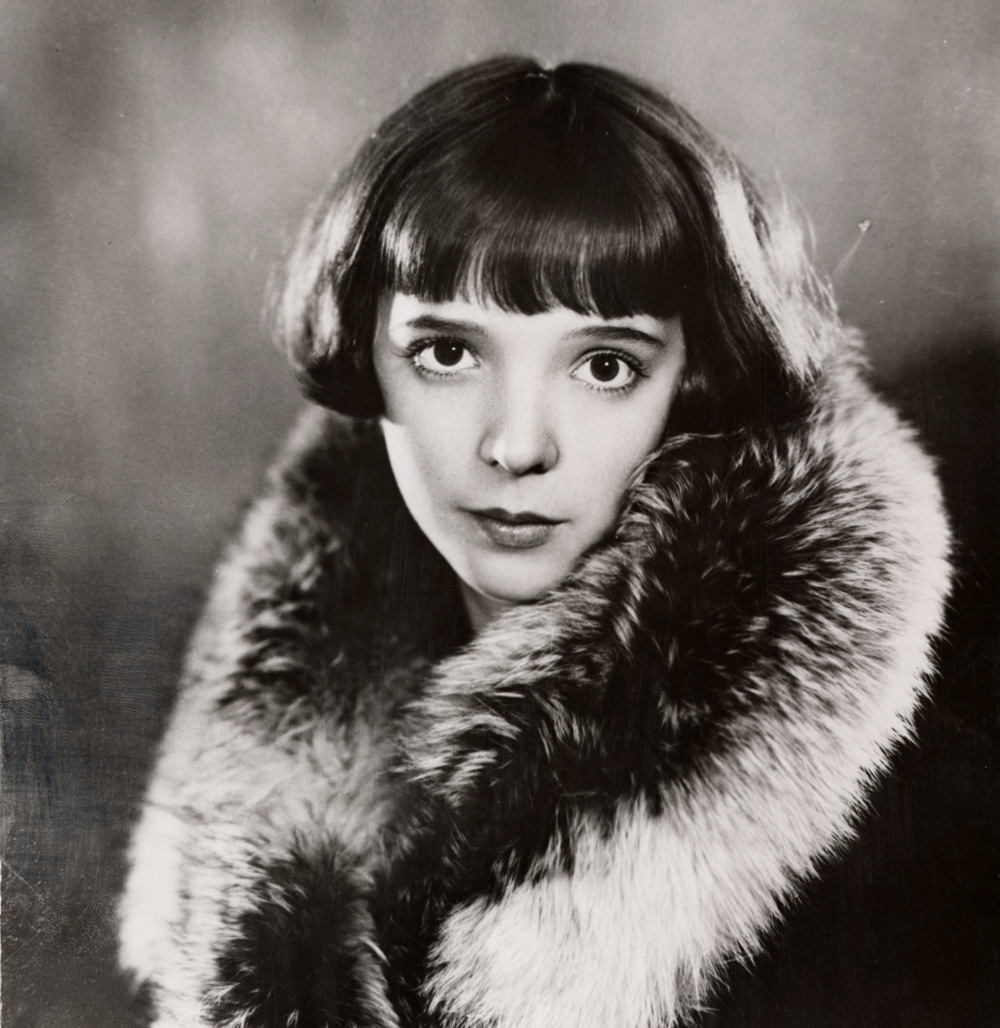
In the picture on the right, below, we see her wedding to Sonnie Hale - an unlikely-looking couple!:
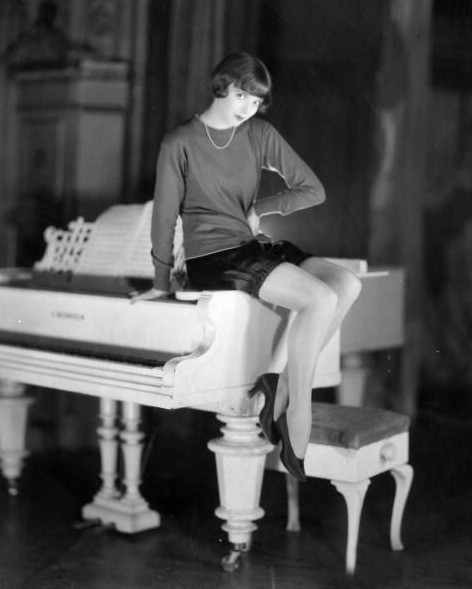 -------------------------
-------------------------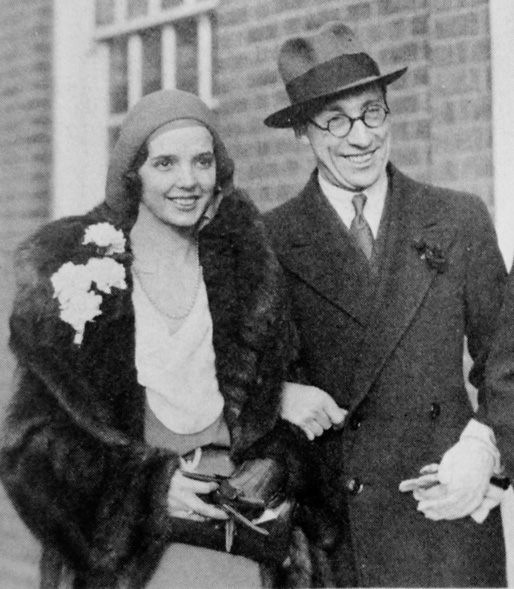
Let's get back again to our Bill Partleton...
We get an insight into Bill's life by taking a look at a slightly torn copy of the London Telephone Directory of May 1935:
 -----
----- 
Bill is the first Partleton to have a telephone in his own name. He's the only one in the book at this date, and he has his own address. This, I think, tells that he's making a success of things, though he's only 24. You could try calling Romford 706, though you may find this number is now out of date.
Two years later, in 1937, Bill married Linda Mabel Burton (Maisie).
During this period, Bill kept racing-greyhounds. He was a great dog-lover.
I think we should have a closer look at Gainsborough Pictures, which from 1927 was part of the Gaumont-British Picture Corporation. Bill is in the show business, but his place of work, Gainsborough Pictures home, at Islington Studios in Hackney, was distinctly unglamorous from the outside as we can see in the 1945 photograph below:

If it looks suspiciously like a power station, it's because that's what it had previously been before being converted to a film studio in 1924.
Gainsborough founder Michael Balcon, in the early days of the company, had specifically forged close links with the large and famous Universum Film AG aka UFA studios in Germany. His intention was to draw on their skills and to train Gainsborough's young filmmakers. This is how Bill came to learn the art of movie make-up under the tutelage of Hermann Rosenthal, a German citizen who worked for UFA:

So, Bill learned the movie tricks of the trade during the 1930s, and then... ah yes, World War II came along. Hermann Rosenthal was given a choice; stay in Britain and submit to internment as an enemy citizen; or return to Germany. He chose to return to Germany - not surprisingly, since Bill's notes refer to Hermann as "an enthusiastic Nazi". Hermann recommended that Bill should step into his shoes at Gainsborough.
We'll briefly follow Hermann Rosenthal to Germany... In the 1930s, the Nazis were famously obsessed with creating propaganda, and naturally the UFA studios were a target of intense focus. Within weeks of Hitler becoming chancellor, all Jews working for UFA were fired. The Nazis undertook a program of covert nationalisation of the whole German film industry by buying majority shareholdings in all the film companies. In 1937 they bought 72% of UFA, and in 1942 it was officially nationalised, but their cloying influence had been felt long before then...
Perhaps the most famous propaganda film made at UFA was the Triumph of the Will, directed by Leni Riefenstahl, chronicling the 1934 Nazi Party Conference in Nuremburg, in which we see Rudolph Hess and Joseph Goebbels in the photograph below:

And again we see propaganda minister Goebbels - 'The Patron of German Film' - with his boss Adolf Hitler at UFA. Hitler liked films:

Thus it was that throughout the 1930s, until the end of WW2, UFA came to produce anti-Semitic, militaristic, and hate films. But even the fascists knew that audiences would have a limited appetite for such bilge. In fact, UFA produced mostly light-hearted musicals and comedies during this time. The propagandistic and nationalistic element in these films was added with a lighter touch.
After the end of the Second World War UFA ceased activity, and initially was so closely associated as the propaganda arm of the Third Reich that even re-issues of its non-political product were possible only by removing all reference to the company from the credits. Furthermore, the UFA studios were located near Berlin - in Soviet-controlled East Germany - and were totally restructured by the communists as a new organisation, DEFA.
I can't find any references to Hermann Rosenthal in films after 1939, though he survived the war; Bill Partleton found him in Berlin in 1966 during the filming of The Quiller Memorandum starring George Segal and Sir Alec Guinness:
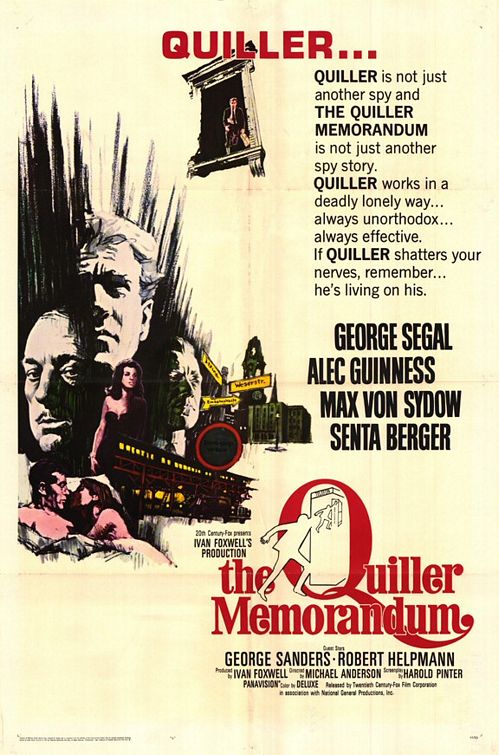
The subject of the film was a hunt for modern Nazis in Germany in 1966. Highly apt, as real-life imitated art, and Bill Partleton tracked down his former mentor, eventually finding him...
"I had a private mission whilst in Berlin, and that was to find the man who taught me in my early days of make-up - Hermann Rosenthal. I went into East Berlin and enquired how to get to Potsdam where he had lived. I was told it was quite a journey and I would need a permit for safety. Only the day before, two Americans had gone into the East recently without permission and both had had every bone in their hands smashed before being put back in the West.
The following day I was in conversation with a local stand-in and I mentioned Rosenthal. The stand-in knew him and told me he was in the West at the famous Schiller Theatre. I phoned the theatre and was told that Rosenthal had retired and the chief make-up artist there invited me to go along and meet his department. He had already heard of me from Rosenthal. I went and was staggered to find how well organised they were with a staff of eight and a huge department and stocks to put on any show. How different from this country where a regular department does not exist in studios or theatre. However, I found Rosenthal confined to a wheelchair but anxious to learn about my progress. I visited him three or four times before I left for home and he was still an enthusiastic Nazi."
Here Bill is credited at the beginning of the film as 'W.T. Partleton', as he customarily was:

The Quiller Memorandum turned up on Channel 4 a couple of weeks ago & I watched it. Here's the cinema trailer for the film:
Cheesy, very, very cheesy but mitigated by lots of lovely location footage in 1960s Berlin. George Segal as protagonist struts around like a peacock, never a hair out of place, but Bill liked him:
"Struck up an immediate friendship with George Segal. He was super-particular about his make-up and his hair which I had to keep in continuity. This was a renewal of my friendship with Sir Alec and I had not seen him since he had been knighted."
 George Segal
George Segal
Before our diversion into Nazi Germany, we were saying that Bill Partleton was working at Gainsborough Studios in 1939. And of course he was, as was everyone else, going to be affected by the war. The first impact was that his beloved racing greyhounds had to be destroyed. This seems a surprising sacrifice to be required of a British citizen, but we have to understand the context. Rationing was in place to conserve food. A person's ration of bacon was 1 oz per day, and 1 egg per week. There were shortages of everything. How would you feed and keep racing dogs under these circumstances?
The British Government had learned a lesson from WW1: some people are far more useful to the war effort in their civilian jobs than they ever could be in the armed services. The nation was going to need to keep its chin up if was to stand any chance in the forthcoming conflict. Entertainment to sustain morale was absolutely essential. And there were also propaganda films to be made - of a gentler variety than those of the Third Reich!
Consequently, instead of being called up for the navy, as he would otherwise have been, Bill was instructed to stay in his role as make-up artist at Gainsborough Pictures, so let's have a look at their Islington Studios again:

Notice that zonking-great power-station chimney right next to the studio? It was decided that it was too much of a hazard. It could fall on the building during a bombing - and bombing there was a-plenty as testified by the temporary prefabricated re-housing in the foreground of the photo - so the studios were relocated to Shepherds Bush in 1941. Before we go there, I need to know what became of the Islington Studios.
In fact Islington Studios closed for good in 1949 and the building remained more-or-less empty for nearly 60 years.
Below we see it as an empty unprepossessing slab in the 1990s:
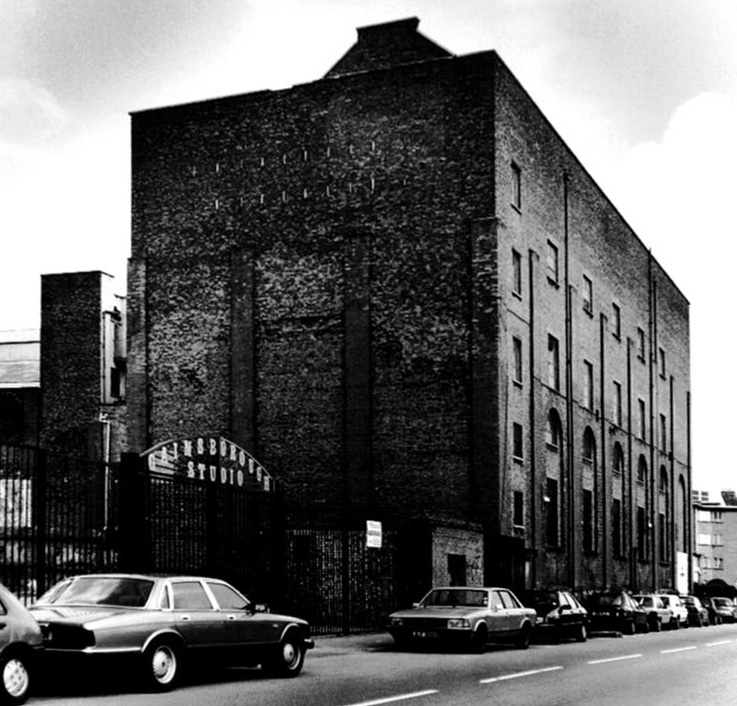
In 2002 it was purchased by developers Lincoln Holdings and converted to apartments:

Association with the old film studio adds cachet to these apartments. The two-bedroom flat in the photograph below is currently for sale [2009] for £470,000:

If I'm forced to comment, and I'm not, but I will anyway, I would say that I'd expect a better view for that price. And another bedroom. And a whole other location than Hackney. Let's say Knightsbridge or Mayfair.
Bill Partleton was now working on wartime-era films which remain famous to this day, even if many of us, myself included, have never seen them. One of these was Shipyard Sally, starring Gracie Fields, released on 20 October 1939, just weeks after the commencement of WW2.
The subject of the film was the plight of the Clyde Shipyards which had been idle for many years due to the Depression, and the hope that they might get working again.
Here's Gracie, hitting the high notes for a rousing rendition of Sir Edward Elgar's British Empire anthem Land of Hope and Glory in the finale of Shipyard Sally, and we get a chance to inspect Bill Partleton's work close-up:
Ironically, at the time of filming, the filmmakers could not have known that the shipyards would be busy again, very soon, and very busy, making warships for WW2.
Here's Bill's notes about Gracie Fields:
"Everything nice that has been said about her is so very true. Appreciative of everything one did for her. She went in to hospital for big operation after Shipyard Sally and I was the only one, outside of her family, allowed to phone her some days after the op."
 Gracie Fields--------
Gracie Fields--------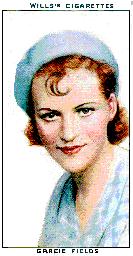
Gracie Fields did much for the war effort, but because her husband - film director Monty Banks - was an Italian citizen by birth, and he held dual U.S. and Italian citizenships, they had to stay out of Britain (in North America) for the whole of the war or he would have been interned as an enemy national.
We seem to have left the hair salon far behind back in Poplar. The Blitz forced the rest of the family to move out, and we can see why in the picture below of Devitt House, Poplar, in October 1940:

You may have noticed an uncanny echo of the earlier photograph of Ronan Point. The difference is that this disaster was caused by a real bomb, a big one, dropped by Adolph Hitler, and not just someone's oven going pop. Devitt House was located on Wade Street, at the point of the orange arrow, just a few yards from Upper North Street:

Gainsborough Pictures, relocated, then, to Gaumont-British's larger film studio complex at Lime Grove, Shepherds Bush.
I think we need to find our bearings. Let's dig out our old map of London again. Gainsborough's Islington Studios were in the yellow circle:

The Lime Grove Studios, located in the blue circle in the map, had been custom-built in 1932 as a smart new art-deco building, as we see them in the photo below of 1933:

Here are the some of the studio facilities at Lime Grove as they were in the brand-new building:



And here's filming in progress during an early production at the new studio; Britannia of Billingsgate. Check out the trombones, bottom right:

During WW2, Bill took turns at firewatching and grew tomatoes on the roof of the studio with his old friend, now deceased, the famous show business publicist Theo Cowan. In the photo below, we see the studio roof at Lime Grove 10 years before Bill planted his toms:

Cigarette manufacturer B. Morris & Sons in the 1930s included a set of cigarette cards in their packs, entitled How Films are Made - created with the co-operation of Gaumont-British.
On cards 21 and 22 we a given a close look at what Bill's job was like:

 I've got to say that the chap on the card on the left looks very much like our BIll... ... I reckon it's him, what do you think?
I've got to say that the chap on the card on the left looks very much like our BIll... ... I reckon it's him, what do you think?
Away from work for a minute; Bill and Maisie moved into Hermitage Court, Woodford Road, Snaresbrook, Essex which is still there as we see in the photo below. Their only child, a daughter, Linda Ann (aka Lynne) was born in Woodford, Essex in 1942.
After this, Bill sent his wife and daughter to Stapleford near Salisbury, Wiltshire, to escape from the Blitz. Sometimes it was possible to visit them there which is where his deep love for the countryside began and the family returned there as often as they could for the rest of his life. He learnt to shoot and brought rabbits and pigeons home for the pot and helped in the fields at hay-making and harvest time. A lot of time was spent in the local pub, The Pelican, where Linda was encouraged to develop a taste for cider while in her pushchair!
 Left: Hermitage Court
Left: Hermitage Court
So, back to the movie-making: it's time we did a bit of name-dropping. I've consulted the good old Internet Movie Database...... with whom did our Bill work?
Sir Laurence Olivier, certainly; Sir Alec Guinness, sure; Dame Margaret Rutherford, naturally; Peter Cushing, of course.
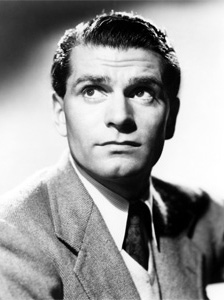



In fact there really won't be any famous British actors whom we can't add to this list. And of course Bill also worked with Americans, when they appeared in British films. Here's an eclectic selection of mixed celebrities, with all of whom Bill Partleton worked, to entertain your eyeballs:
Just hover your mouse over the pictures for a clue if you can't remember their names. Believe me, I could have spent the whole afternoon cutting and pasting movie stars and could have filled this whole page.
In 1945, Bill was make-up artist for the classic 'bodice-ripper' film The Wicked Lady... here's the trailer for the movie, which starred Margaret Lockwood and James Mason:
Extensive re-shooting was required before the film was released in the United States due to the US censor's objections to the [historically-accurate] bosom cleavages on view.
In that era before television, cinema audiences were enormous, so we shouldn't be surprised to learn that, based on box-office admissions, The Wicked Lady is still the 9th most popular film of all time in the UK.
 Margaret Lockwood--------
Margaret Lockwood--------  James Mason
James Mason
Bill Partleton was to appear in later years in Margaret Lockwood's This is your Life on TV.
He had a lifelong friendship with Phyllis Calvert, voted Britain's second-most popular actress in the 1940s, after Margaret Lockwood. Phyllis was often cast in the role of the sweet and sensible heroine in the costume dramas which were the hallmark of Gainsborough Pictures:
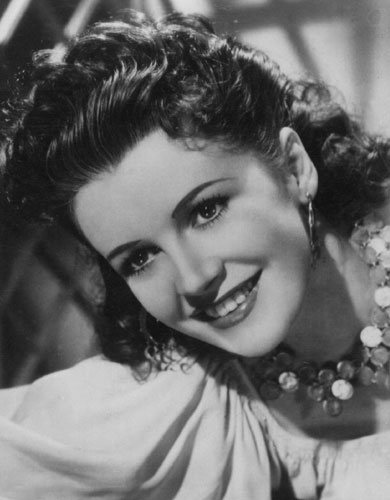 Phyllis Calvert
Phyllis Calvert
Having made her up for her first film test, subsequently doing her make-up on The Man in Grey in 1943, when she had to fall down a flight of stairs, Bill was the only person on the set who knew that Phyl was expecting her first child, a daughter Auriol born in 1943 later destined to be a friend to and flatmate of Bill's daughter, Lynne.
Here's Phyllis as the unsuspecting innocent cuckolded wife in a scene with Stewart Grainger in The Man in Grey:
Phyllis' last role on TV, aged 85, was as Alice Bly in ITV's popular series Midsomer Murders in 2000. She passed away in 2002.
In 1945, Bill's older brother George Partleton also starts to appear in credits as a make-up artist, and is also to have a life-long career in the job; I'm assuming that Bill helped him get his start. George's career will be tracked on his own page in The Partleton Tree.
In 1949, Gaumont-British sold the Lime Grove Studios at Shepherds Bush to the BBC and it was converted into a TV Studio. If, like me, you watched Doctor Who from behind the sofa in the 1960s, you may be interested to know that it was filmed at Lime Grove.

And here, in the later 1960s, in Lime Grove Studio G, is Top of the Pops - though I never remember them having a desk...

Lime Grove closed in 1992 and was demolished...
But we need to get back to Bill. He wasn't at the BBC. Gaumont-British had been absorbed into the Rank Organisation, and I'm sure many of our gentle readers will find their opening titles very familiar:
Bill was now well-and-truly in the show business but he hadn't forgotten his roots in Poplar. Father Bartlett of St Saviour’s Church (the Vicarage was in Arcadia Street, Poplar) appears to have been a great influence in the lives of the family while they were growing up; running youth groups and teaching the boys how to box. In around 1948 Bill returned to Poplar to make-up the cast of their Passion play.
After Lime Grove closed as a film studio in 1949, Bill relocated to the Rank Organisation's Pinewood Studios in leafy Buckinghamshire... We'll need a larger-scale map to locate Pinewood - it's circled green in the satellite view of Greater London below:
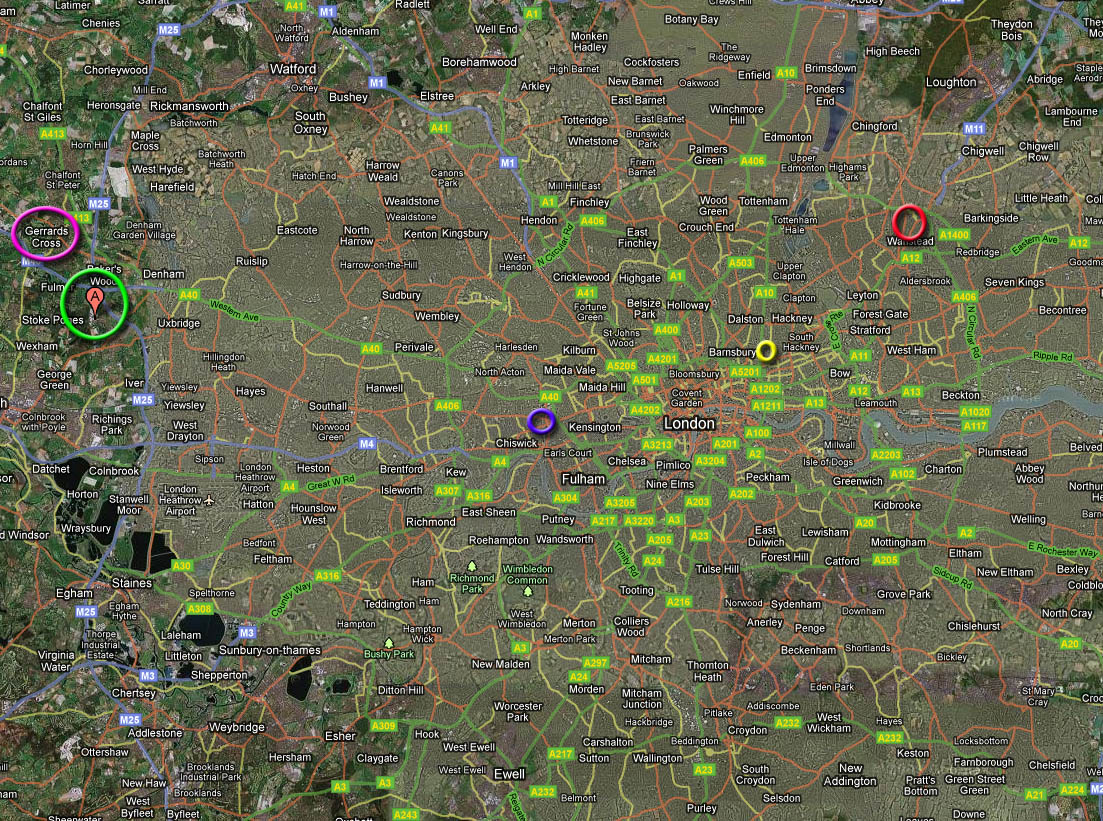
As we can see, the locations of Islington (yellow circle) and Shepherds Bush (blue circle) Studios are in densely-populated parts of London. Pinewood, circled green, sits in the countryside to the west of London's vast urban sprawl where it has room to breathe. Built in 1936, it's a big affair as is evident in the 1961 publication below:

If we examine this lovely cut-away view closely, we find that Bill was working in the area marked 9, the Hairdressing and Make-up Depts.
Pinewood's biggest claim to fame is that it has been home to all James Bond movies. Below we see an aerial photo of the studio circa 1970:
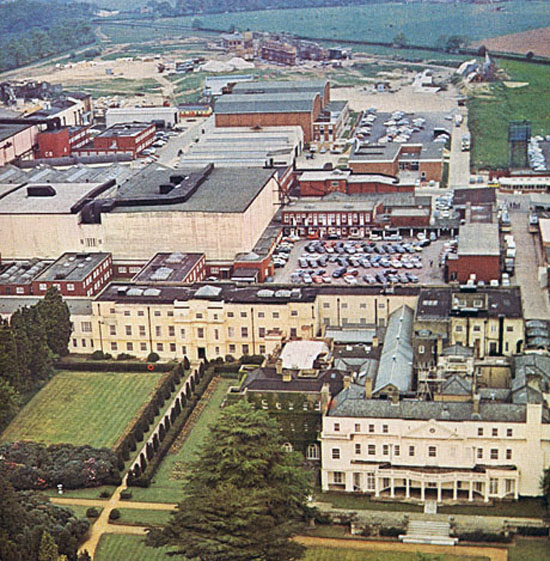
After the war Bill worked on Christopher Columbus with American actor Frederic March who became a great friend and who, on his return to the United States, used to send the most amazing food parcels for the family; they included maple syrup and tinned ham which had been impossible to find in broke, austere, 1950s post-war Britain. Bill's family still have the carved wooden box that contained a fruit cake.
Below we see Frederic March being pistol-whipped by Humphrey Bogart in 1955 after his return to America:

Bill wasn't always based at Pinewood. In 1950, he worked on The Black Rose, for 20th Century Fox:
"This film was disorganisation at its worst. It was based at Shepperton and was being made by 20th Century. We did not know when we were going but we did know it was to Morocco. After playing around with tests it was suddenly announced that we would be leaving soon and all lined up for “jabs”. I forget how many we had but on the way home, in the car, I got the “shakes” and could not control my foot on the accelerator pedal. I got home to Woodford, Essex, and my wife called our doctor who, after seeing the record of the “jabs” said, “they have done it at last – put a quart into a pint pot”."

Below we see - on location for The Black Rose - Bill Partleton, picked out by the yellow arrow, in conversation with Orson Welles, seated:

In 1954, while working on The Astonished Heart, starring Noel Coward, Bill recorded in his notes:
"Noel Coward brought Princess Marina [of Greece] and a party of friends to the studio and I was introduced to them"
 Noel Coward----
Noel Coward---- Princess Marina
Princess Marina
Bill Partleton was now head of the make-up department for the Rank Organisation, making the journey from the family home in Essex (circled red in the map below) every day. Much pressure, and a long commute - as we can see below - took their toll and, following a health scare in 1954, when he was erroneously diagnosed with tuberculosis, he built a house in Gerrards Cross (circled purple) to where the family moved in 1955:

Pinewood's most successful products in the 1950s were highly-British comedies such as the Doctor- series of films. Bill worked these and on Jumping for Joy starring Frankie Howerd, Stanley Holloway and A E Matthews; directed by his old friend John Paddy Carstairs.

In 1959, Bill had some serious travelling to do as make-up artist for the filming of North West Frontier in India with Lauren Bacall and Kenneth More:
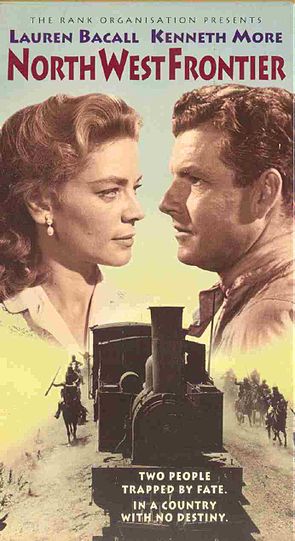
Bill's notes record some of the difficulties he faced; "First section of film made in Jaipur. Stayed at Maharajah’s Palace. 115 degrees of heat. Kept make-up in large thermos flask daily filled with ice. Taj Mahal. Cool hotel in Delhi. Make-up stayed well in heat."
The film co-starred Herbert Lom - the perennial bad-guy in British movies for decades, and Wilfred Hyde-White:
 Herbert Lom-------
Herbert Lom------- Wilfred Hyde-White
Wilfred Hyde-White
Herbert Lom's double created make-up problems for Bill, as his hair was very different from Herbert's at the front; and there were other worries for the crew as they moved to a new location, shooting in Granada, Spain, as identified in Bill's notes:
"Moved to Granada... From Granada across mountain to location, Drunk driver... Daily trip across mountains... Scary journey. Bald front for Herbert Lom’s double."
More location work in 1959 found Bill in the Rhineland, Germany, for the filming of Whirlpool, a crime drama. The location, a town called Boppard, is rather picturesque, as we can see below:

The cast was predominantly European, including Juliette Greco who in real life was a French nightclub singer and actress, and Swiss-born German actor O.W. Fischer. Here's Bill's notes:
"Went to Boppard on the Rhine. Greco, who I had been told was tough, was kindness itself. Fischer had German make-up artist who was engaged for the German location. Fischer had a wig. I was to carry on with the make-up in England for the interiors. They made it as complicated as possible because Fischer wanted to bring the man to England with him. However, I had plenty to time on the location to examine the make-up and repeated it on our return to England.
Went to the toilet and discovered a naked lady, Muriel Pavlow!"
Not to spare Muriel's blushes, below is a picture of her on the cover of a 1950s cinema magazine. Despite her Polish-sounding name, she was born in Britain, and had been a teenage actress in British films in the 1930s. Muriel is still alive in 2009. On the right we see O.W. Fischer on a German magazine of 1960. I can't see the join of his wig:
 Muriel Pavlow---------
Muriel Pavlow--------- O.W. Fischer
O.W. Fischer
A year later, 1960, Bill Partleton was dealing with Kenneth More's make-up again, but this time his skills were extended into special effects:

Bill had to test his ingenuity in this comedy about putting a British man on the moon:
"Kenneth More was being put through his testing period in the film to find his resistance to the conditions he would have on his journey to the moon. He was put into a “heat” chamber and was expected to sweat madly. I did this, first by spraying glycerine on his face to form the globules and then hid some punctured tubing in his hair and pumped water through the tubing so that it slowly ran down his face like intense perspiration."
In 1961, Rank produced The Wild and the Willing, filmed in Lincoln; below we see Bill Partleton's credit:

This was a slow, worthy and forgettable movie about students at university, angst-ridden, but it is notable for the film debuts of two very famous actors, John Hurt and Ian McShane:
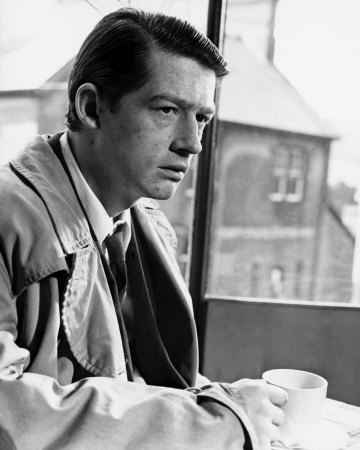 John Hurt----------------
John Hurt---------------- Ian McShane
Ian McShane
In the big scene, the character played by John Hurt climbs the university tower for a student prank, and falls, creating an interesting task for our Bill:
"Five-week location in Lincoln. Made an exact mask for John Hurt dummy to be dropped from top of University. Samantha Eggar and Catherine Woodville made more beautiful than normal students but not obvious. Returned to Pinewood to complete the interiors for the film."
John Hurt obviously remembers Bill Partleton, as revealed in an interview about Hurt's career in the Evening Standard on 08 February 2012:
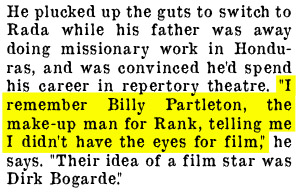
Through the 1960s, Pinewood produced the evergreen and culturally iconic British Carry On series of films, still very evident on TV today. In 1964, Bill was make-up artist for Carry on Spying.
In keeping with the East End theme of these pages, this production marked the first appearance of Barbara Windsor in a Carry On film. Click below to watch her first scene:
Quack, quack, oops. I challenge anyone not to smile at that exchange between Kenneth Williams and Charles Hawtrey. How very typically Carry On!
The big film for Pinewood in 1965 was...

Here are Bill's notes for the making of this film:
"Picture took six months to make. We needed six months good weather and got it. Poured with rain on last day after shooting finished. Nearly all of the film made at Booker airfield where one arrived at 6.45am. The period of the film was the early days of flying which was a time 99% of men grew moustaches. This meant that I had to dress and curl about 800 of them.
Terry-Thomas had an enormous moustache and he used to work himself into such a sweat that the spirit gum would turn white and have no adhesive power. This meant that the moustache would have to be cleaned and re-dressed before could be photographed. I overcame this waste of time by having six moustaches ready for use to replace them. My colleague on the film was Stuart Freeborn who chose to look after the ladies mostly. He put a perfect make-up on Sarah Miles and, to everyone’s surprise, she asked the director, Ken Annakin, if she could change it and do it herself. This was OK’d and she reappeared with a ghastly make-up with a mass of blue eye shadow that was totally wrong for the period."
Now, you may not recognise the name Stuart Freeborn, but you will recognise his face...

Stuart was the make-up and modelling artist for Star Wars and its sequels, creating the make-up for all of the characters.
For Return of the Jedi, he had the task of sculpting the original model of Yoda, and, after struggling to find the right look for the character, eventually based Yoda's visage on his own face...
 -----------------------
-----------------------
Stuart was born just 3 years after William Partleton, in 1914. Stuart Freeborn died in 2013, aged 98.
Returning to Bill Partleton and Those Magnificent Men... British comedian Tony Hancock - a man with a serious alcohol problem - appeared in the film, and Bill gives us a glimpse into Tony's life:
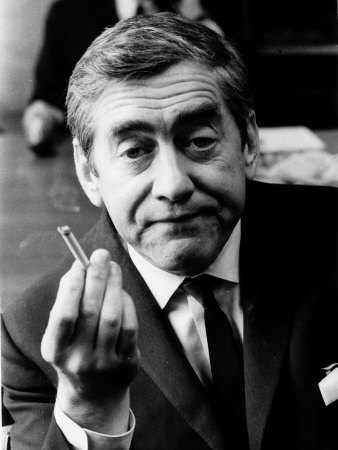 Tony Hancock
Tony Hancock
"One of the nicest people on the film was Tony Hancock who played the part of a pilot of one of the flying crates. I was invited very often to share his champagne but I never have a drink during shooting hours. The cast included actors of all nationalities – German, French, Italian etc. and all with the flying machines from their respective countries. The one shot of this enormous film was of all these aircraft, which looked clumsy on the ground, all in the air during the race. It impressed greatly."
Here's a screenshot of Bill's credit at the end of the movie:
Also in a busy 1965, Bill did the make-up tests in Europe for Christopher Plummer for the Sound of Music:

1966 was a year for spy thrillers. In addition to the Quiller Memorandum, Pinewood made Arabesque, starring Gregory Peck as an expert in ancient Arabic hieroglyphics, and Sophia Loren, who become tangled in a plot to assassinate an Arab Prime Minister:
 Gregory Peck and Sophia Loren
Gregory Peck and Sophia Loren
Here are Bill's recollections of working with these actors:
"Gregory Peck would like to be an English gentleman. He made this confession to me one morning and asked if he would fill the bill. I told him there is little difference between and English or American gentleman – just the accent. He certainly was a gentleman and I would jump at the change to work with him again. Sophia Loren was, to work with, much the same as Greg Peck – word perfect and ready for every shot and charming with it."
Also in 1966 we find Kaleidoscope, whose plot involves a glamorous couple who plan to break into a playing-card manufacturer to mark the cards and then break the bank at every European casino. The stars of this film were Warren Beatty and Susannah York:
Bill wasn't much impressed with Warren Beatty - a primadonna given much to his own vanity... he wouldn't be the only person to make that observation during Mr Beatty's career:
"This film was interesting as it was an early one with Susannah York and also for its trip to the South of France. We stayed in a hotel just opposite the Casino in Monaco in the height of luxury. It was there that I met an old friend, Mr Klein, English head of Max Factor, who was there for a holiday. Susannah was easy to work with but Warren Beatty was continually having trouble remembering his lines. I did not find him at all pleasant."
 Warren Beatty------------
Warren Beatty------------ Susannah York
Susannah York
In the 60s, Pinewood converted some of the studios to TV Production.
And thus it is for a TV show that we see the next credit for Bill Partleton. Anyone guess what it is?:

I'm sure the memories of many of our gentle readers will be pleasurably triggered by watching the following title sequence, not to mention listening to the leisurely, inspired, unmistakable opening music written by Laurie Johnson, featuring a full 30-second bongo-drum-roll before the music even starts...
Actually, this stylish, suave, witty, quirky, unprecedented, unparalleled spawn of the sixties - The Avengers - was filmed at Elstree Studios. However, a single episode, The Fear Merchants, was filmed using the back lot at Pinewood in September 1966, which explains why Bill Partleton is credited only once during its eight-year run.
Diana Rigg, who played the role of Emma Peel in the series, was voted the sexiest actress ever by U.S. TV Guide magazine in its poll at the end of the 20th century:
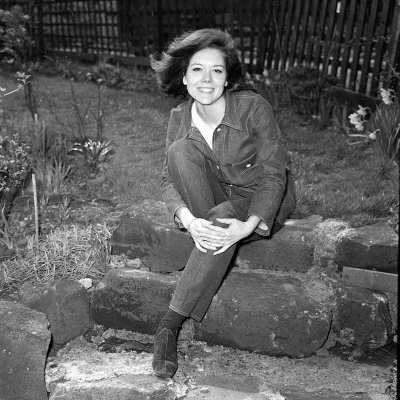

Having watched re-runs of a couple of Avengers in recent years, with my eyes sticking out on stalks and my tongue hanging out like a cartoon dog, and then having just seen Diana Rigg on You Tube whilst researching this bit of the page, I'm bound to say that I don't disagree with TV Guide's verdict.
A lavish TV production in 1969 was David Copperfield with a star-studded cast including Richard Attenborough and Laurence Olivier. Bill found himself upset with actor Ron Moody who had brilliantly played the part of Fagin in the celebrated Dickens musical adaptation Oliver! the previous year:
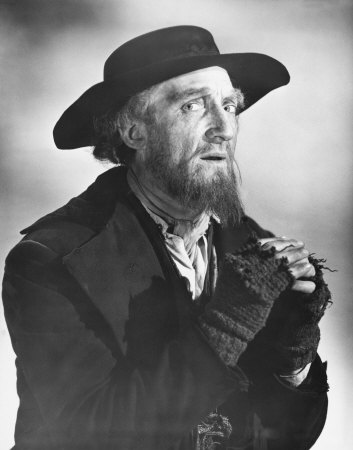 Ron Moody as Fagin
Ron Moody as Fagin
This time Ron Moody was to play the part of Uriah Heep, but Bill Partleton didn't appreciate having his workload doubled...
"We completed a very nice location and returned to the studio and, for a change, a character [Ron Moody] who was difficult to get along with. The fact that he had had some success in film and on stage as Fagin in “Oliver” had gone to his head and he decided to be difficult. He was to play the part of Uriah Heep which meant having a false nose. I made a perfect one for him which he took on the set and treated it badly so I stayed late at the studio to make another."
We move on to 1970, and the film On a Clear Day You Can See Forever, starring Barbra Streisand:

Bill's notes for this production include an interesting clash with Cecil Beaton, the famous society-photographer and set designer, who had created the period costumes for the film:
"This was an occasion when I was asked to do an English location for a Hollywood film. Barbra Streisand was the star and had with her a retinue of staff. There were two Hollywood make-up artists with her but she made herself up. One American make-up artist stood by with his make-up and a mirror which she went to from time to time.
Cecil Beaton reared his head in this and when he interfered with us, I told him to clear off - to put it mildly. He complained to the director, Vincente Minelli, who called a meeting and told us that what Beaton said had to be done..."
The plot of this musical film surrounds Miss Streisand as a 22-year-old New Yorker who regresses under hypnosis to a previous life, in England. The regression sequences were filmed at Brighton Pavilion. The movie also featured Jack Nicholson:
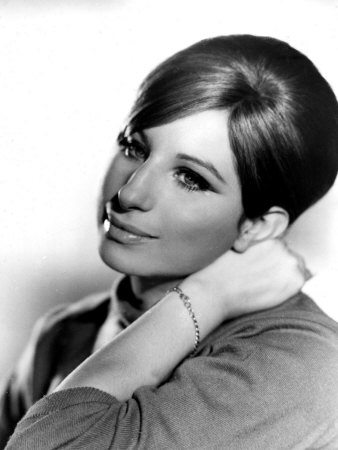 Barbra Streisand---------
Barbra Streisand--------- Jack Nicholson
Jack Nicholson
In 1971, Bill found himself on location again, for the filming of another period adaptation, Robert Louis Stevenson's Kidnapped.
This production was beset with budgetary problems and it's possible that some people involved in the movie didn't get fully paid, including these famous actors whom we haven't mentioned yet - Jack Hawkins, Trevor Howard, Donald Pleasence:
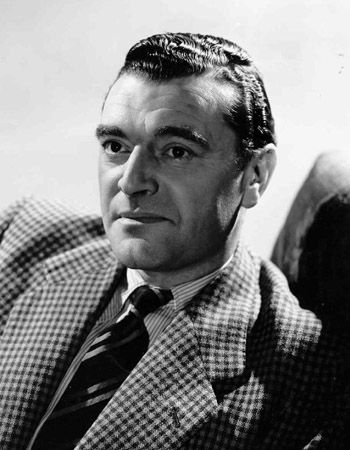


"This we shot on location to start with in Scotland. We were first centred in Oban to be handy for the Isle of Mull and local locations. This area is noted for its fantastic sunsets which have to be seen to be believed. Mull was strange in its difference in good and bad weather. Dull and ordinary in bad weather but beautiful in good."
Bill Partleton worked on The Wicker Man in 1973:
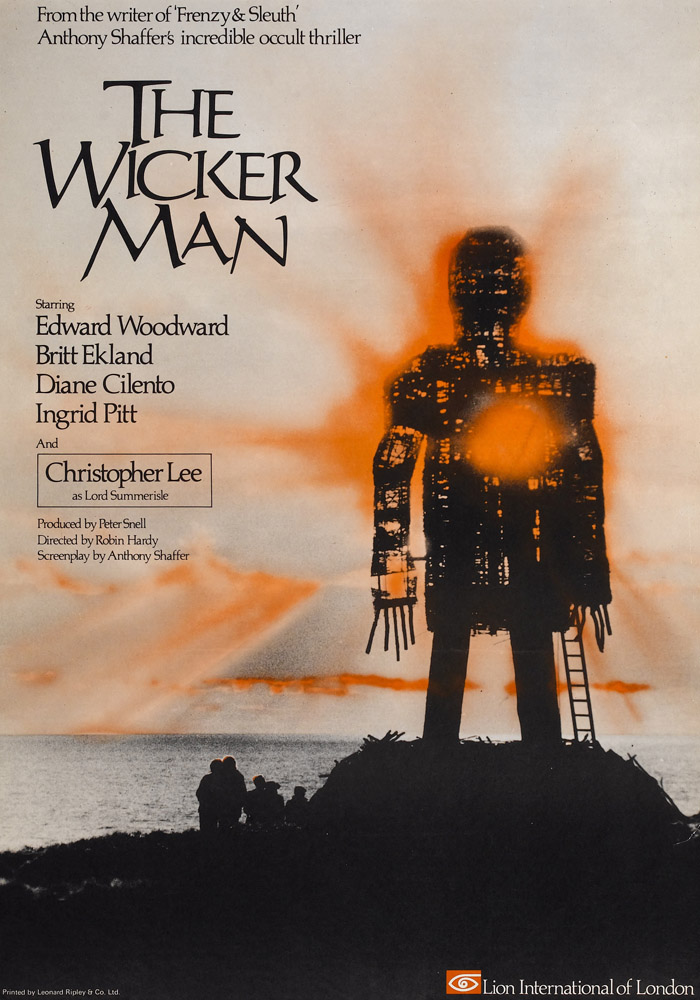
By a strange coincidence, this film is also set on a Scottish island, and stars Christopher Lee and Britt Eckland:
 Christopher Lee----------
Christopher Lee----------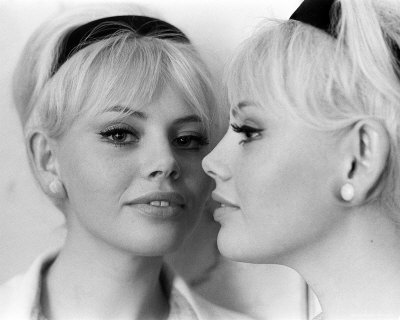 Britt Eckland
Britt Eckland
The Wicker Man is a horror movie and has achieved cult status in the four decades since its release. Britt Eckland, interviewed in 2008 on Friday Night with Jonathon Ross, told that she had refused to dance fully naked in one scene because she had then recently discovered that she was pregnant, and said she later found out that the body-double used for the scene was "a Glasgow stripper". Jonathon Ross, who is the BBC's main movie critic, revealed that The Wicker Man is one of his all-time favourite films.
The Wicker Man is the last entry listed for Bill Partleton in the IMDb, though I am assured it wasn't his last film. He passed away in 1975 aged 64.
If you enjoyed reading this page, you are invited to 'Like' us on Facebook. Or click on the Twitter button and follow us, and we'll let you know whenever a new page is added to the Partleton Tree:
Do YOU know any more to add to this web page?... why not send us an email to partleton@yahoo.co.uk
Click here to return to the Partleton Tree 'In Their Shoes' Page.
